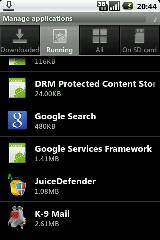7" Infotmic Gingerbread is one of the hottest tablets in the chinese market today. It is running on Android 2.3 Operating System and priced for under $100. The appearance strikingly resembles its cousin, the 7" WM8650, but internal components are quite a bit different. First and foremost, the Infotmic IMAPX210 processor clocks at 1.0Ghz while 7" WM8650 only reaches up to 800Mhz. Infotimic based tablet is running on Android 2.3 which is quite a bit smoother than the older version Android 2.2 installed on WM8650. Flash and video output capabilities are aso superior on the 7" Infotmic vs the WM8650. The former supports Flash 10.2 and 1080p video output, while the latter only supports Flash 10.1 and 720p video output. And if you need a tablet for video calling we've got good news for you, Infotmic supports Skype Video Chat that previously WM8650 was not capable of. And lastly, the battery is also slightly better on 7" Infotmic (1800Mah) with 7" WM8650 having (1500Mah)
Considering that the price on both devices is the same we can reccommend the 7" Infotmic Android 2.3 tablet as it delivers the best value.
Considering that the price on both devices is the same we can reccommend the 7" Infotmic Android 2.3 tablet as it delivers the best value.
 10:56 PM
10:56 PM
 Unknown
Unknown











